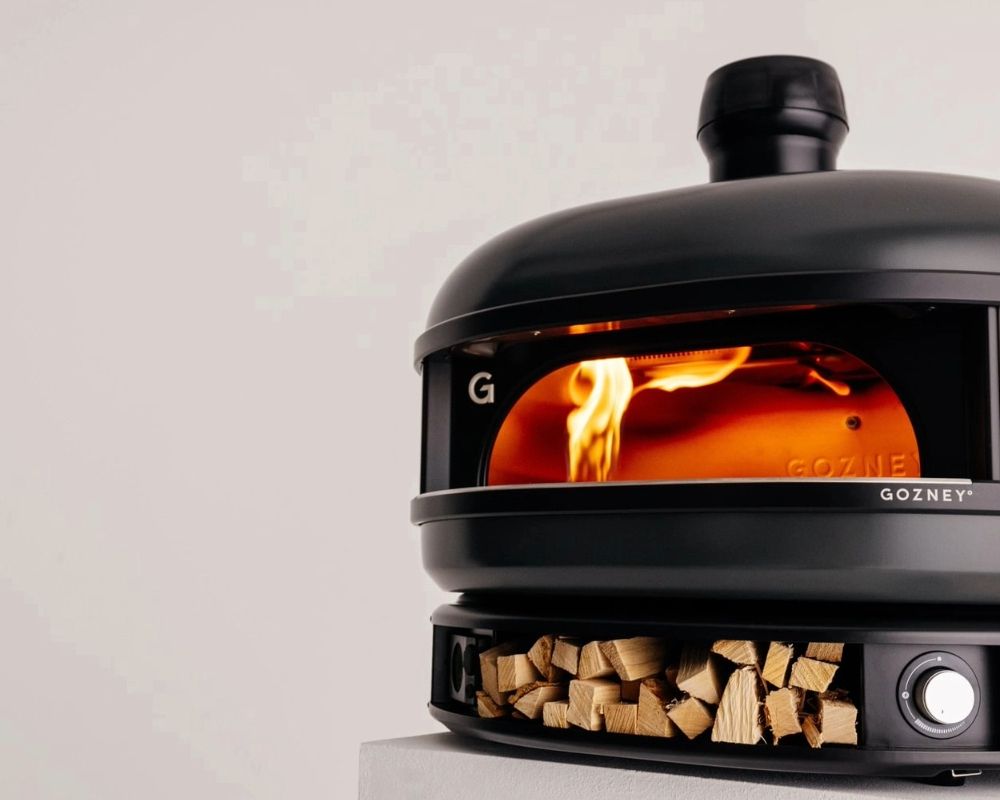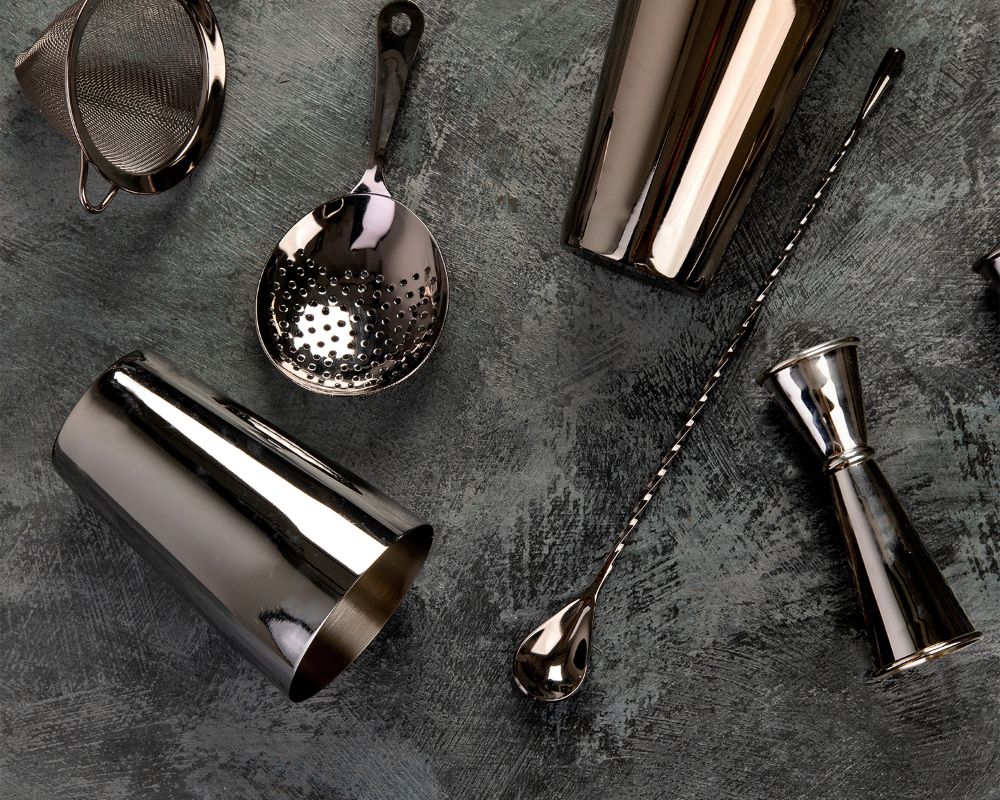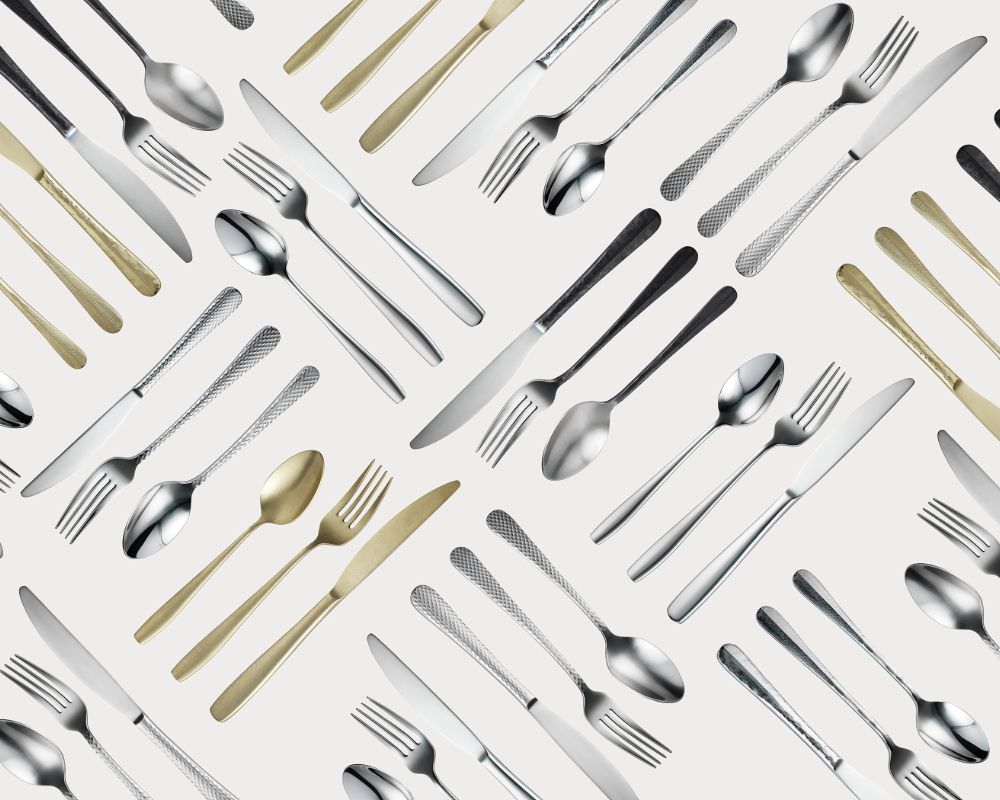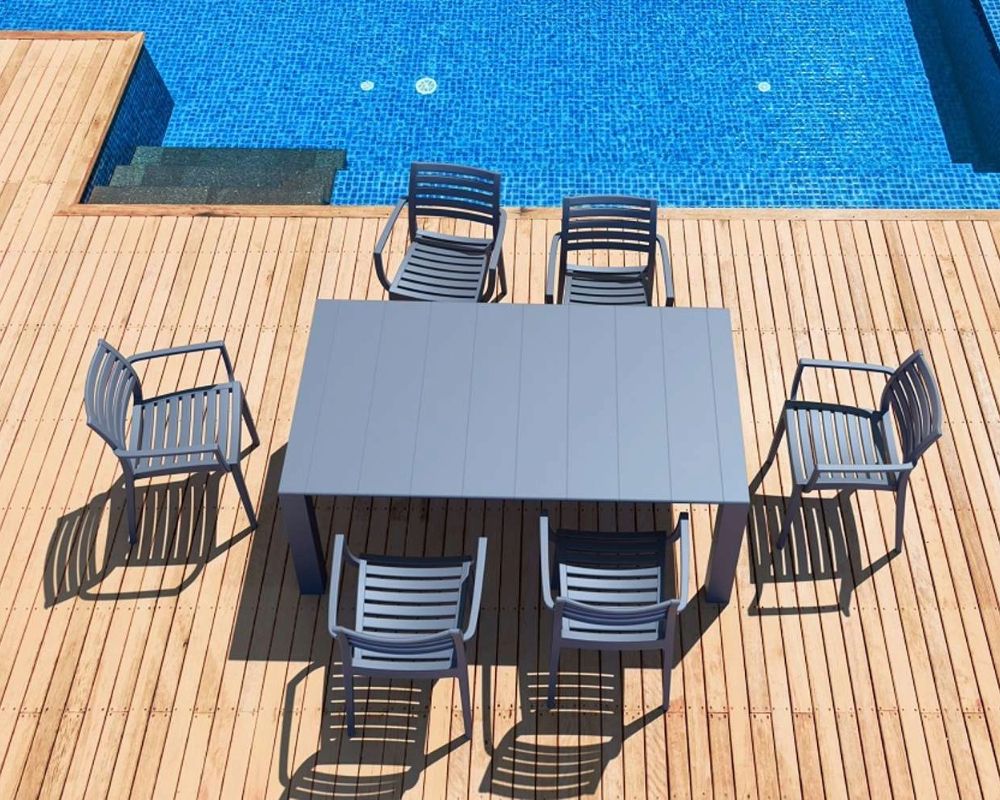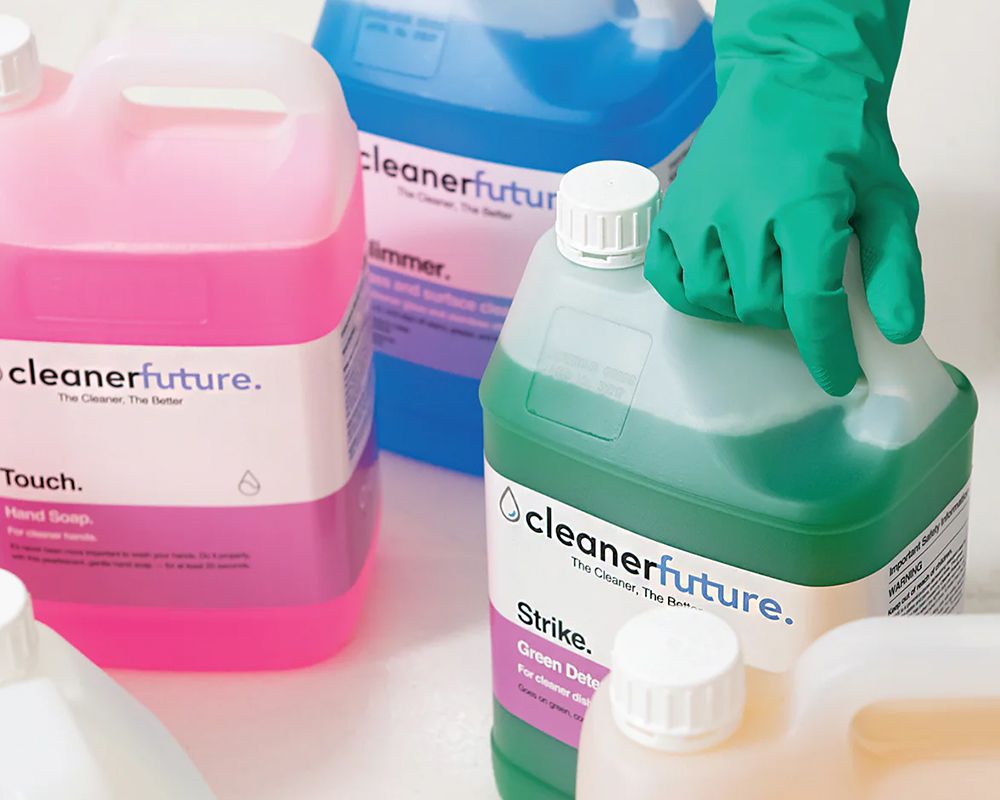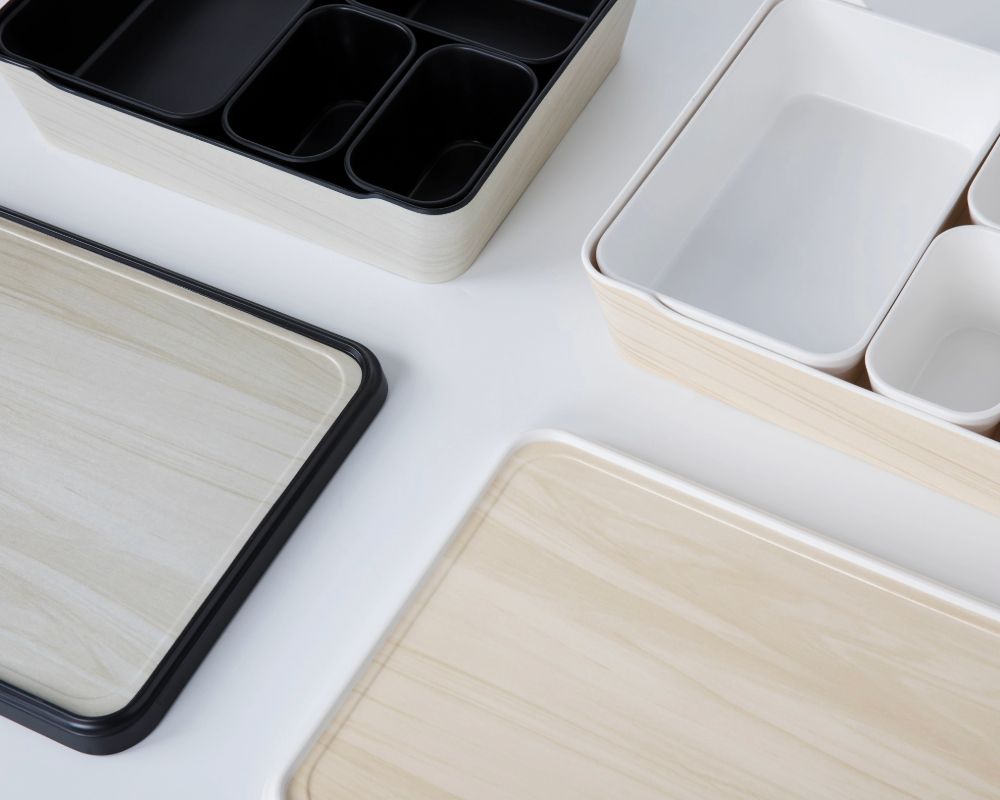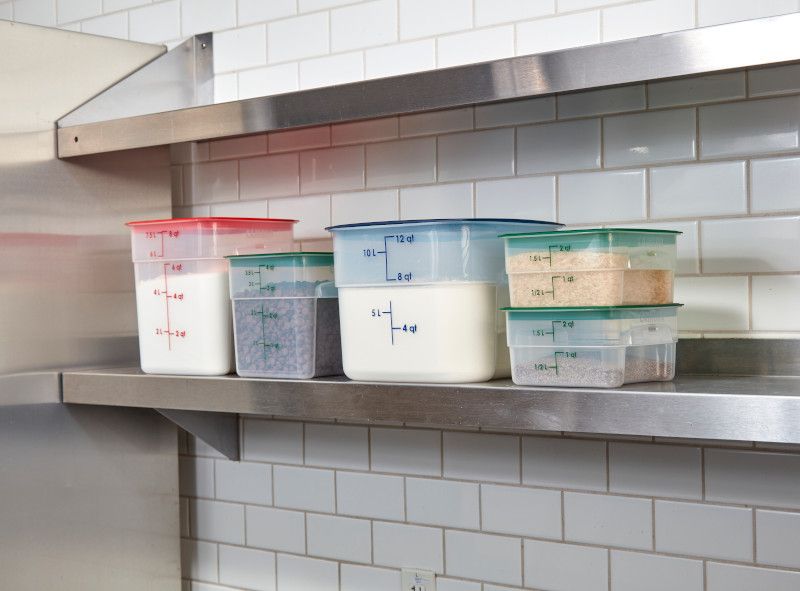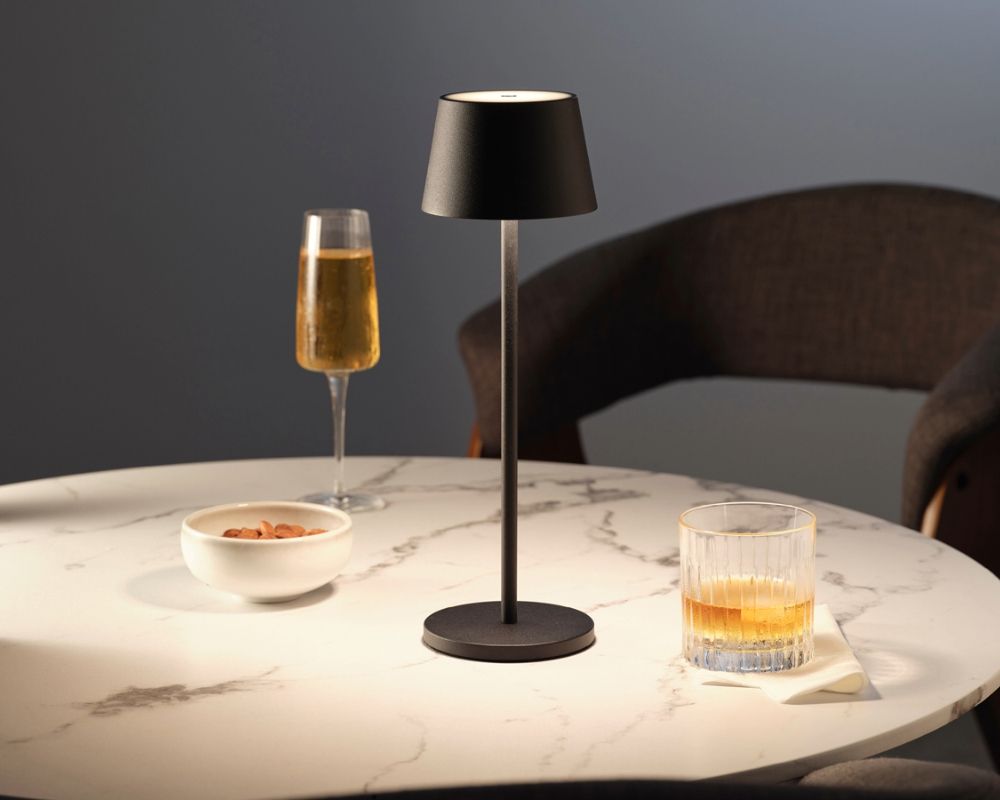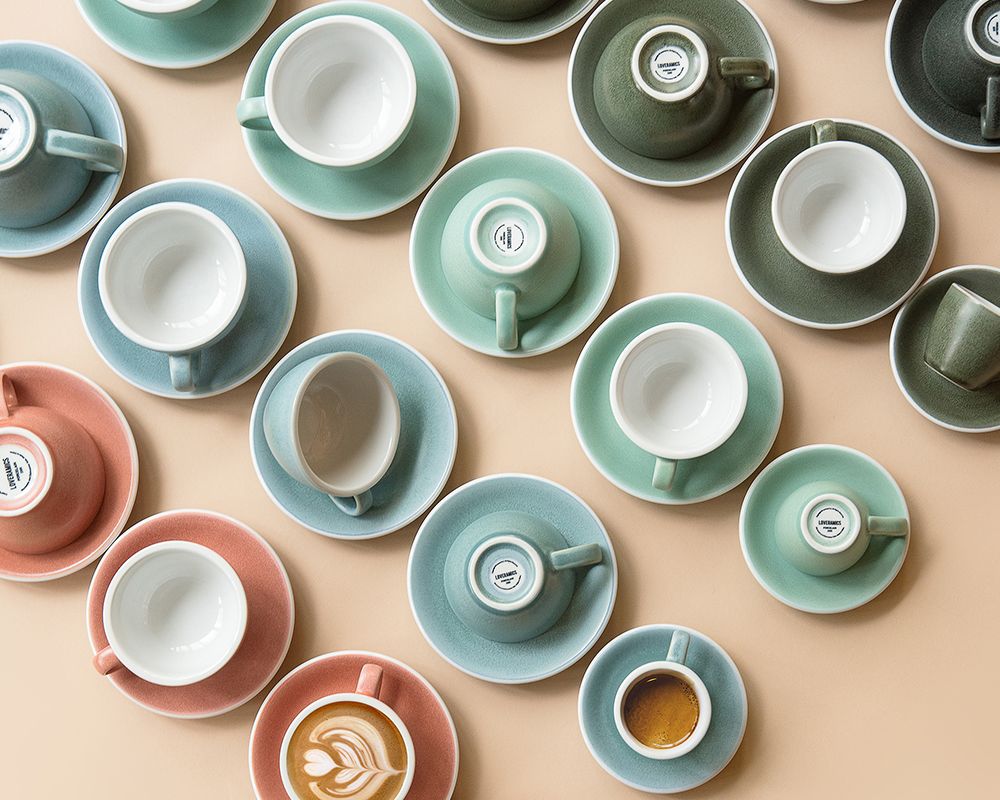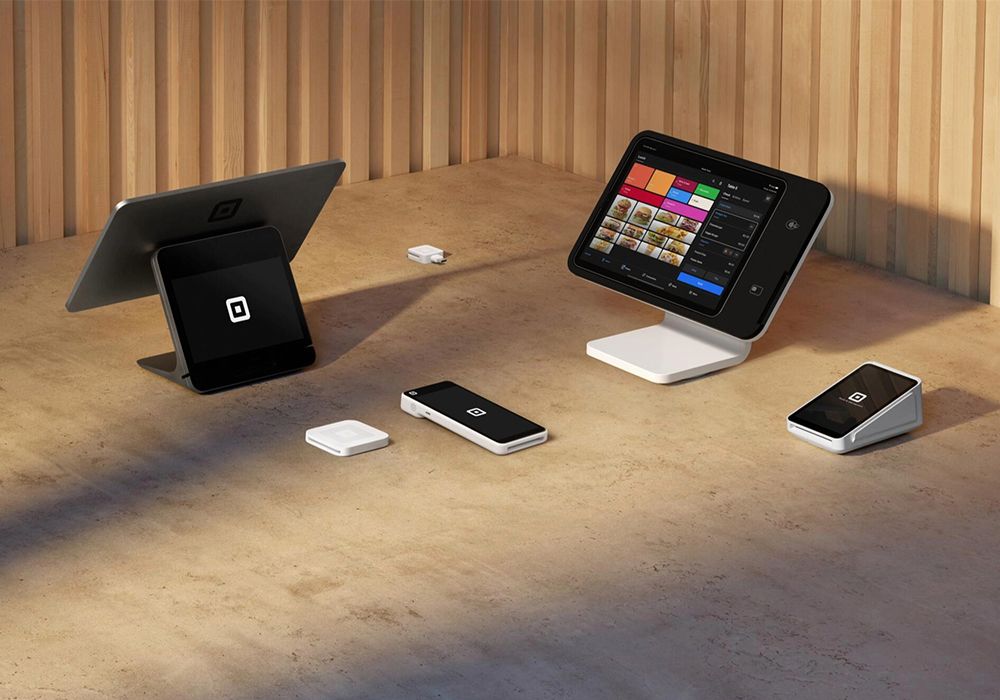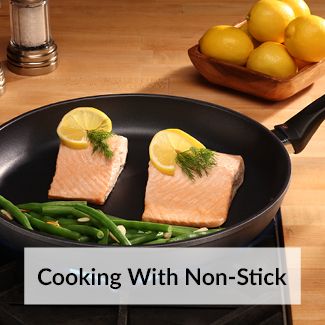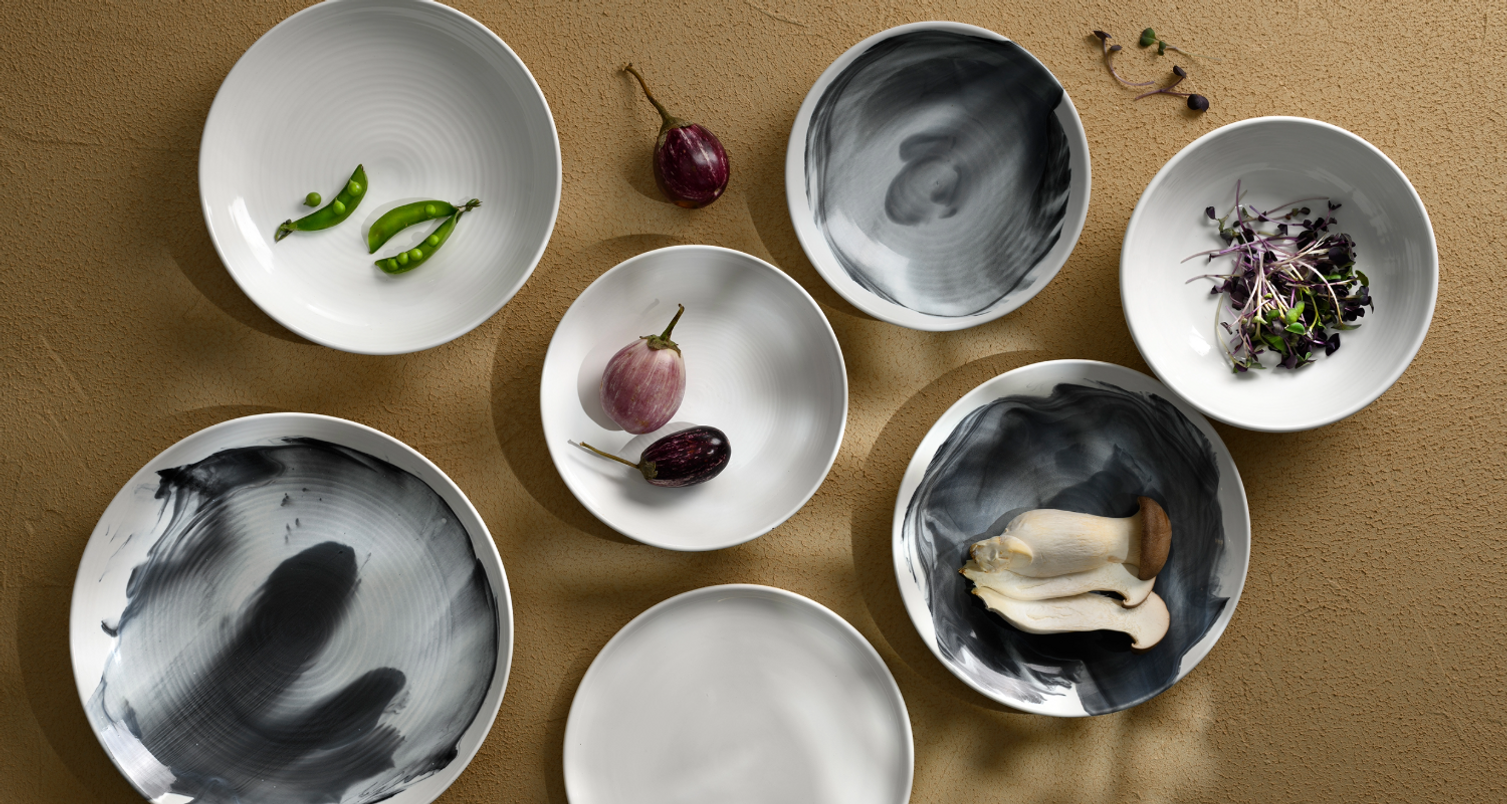Cooking with Non-Stick
Non-Stick Care Instructions
Before using new cookware for the first time, wash it with hot, soapy water, rinse well and dry it thoroughly with a soft cotton or linen towel.
Non-stick cookware performs better at slightly lower temperatures than standard cookware; experimentation will help you find the perfect settings.
Chef’s Hat recommends what we call the "butter test": Heat the pan on medium, and when its rim feels hot to the touch, add a pat of butter. If it bubbles, the heat is right. If it browns quickly and burns, clean out the pan and try again at a lower heat setting. Non-stick cookware should never be used on high heat.
The greatest advantage of non-stick cookware is that it needs no butter or oil to release the food cleanly, but you can certainly add fats for taste and texture. It's the perfect cookware for people who are watching their weight or cholesterol levels or who are following a heart-healthy menu. Cooking sprays should never be used on non-stick cookware.
Probably the most important rule with non-stick cookware is to never use metal utensils on your non-stick surfaces; they can damage the coating in a split second. Opt instead for materials like wood, nylon, plastic, rubber or silicone, or use specially coated utensils designed for non-stick surfaces. Never cut into the food you're cooking with a knife; it's a sure way to damage the surface and void the warranty.
Also, do not use a non-stick pan under the salamander or bake at temperatures higher than 220 degrees Celsius. The intense heat will damage the finish.
Cleaning and Care
Keep your non-stick cookware clean for consistent, quality performance. Any food residue or leftover grease will cook into the surface and carbonize, causing food to stick. That cooked-on residue is hard to see and even more difficult to remove, so wash carefully and thoroughly every time.
It's essential to let the cookware cool completely before washing; immersing a hot pan in cooler water could permanently warp and ruin it. Though it's tempting to load the pans into the dishwasher, resist the convenience and always wash non-stick cookware by hand with hot, soapy water using only a dish detergent made for hand washing. The high heat of a standard home dishwasher can not only ruin non-stick surfaces but also void the warranty. Take care never to use harsh cleaning agents such as bleach, abrasive cleansers, or other chemicals on non-stick surfaces.
Though it's best to handle these pots and pans as if they're fragile, you can scrub off stubborn messes with some elbow grease and a washcloth, sponge, nylon scrubber or nylon net-wrapped
Sponge such as a Dobie pad. To avoid the risk of residue and the resulting carbonization, it's a good habit to wash each piece twice to ensure that every last trace of food and oil or butter is removed. It's important to never use abrasives such as steel wool, stiff brushes or scouring pads, which will scratch the surface and ruin your cookware. Be sure to rinse thoroughly and dry each piece completely.
Storage
Finally, careful storage is important for the lifespan and performance of non-stick cookware. Most manufacturers recommend storing your cookware on a hanging pot rack with plenty of room between items. Don't have a hanging rack? Safely store your cookware in a cabinet by layering a soft cloth - such as a baby's receiving blanket or a dish towel - between each pot and pan to protect the non-stick surface from coming into contact with bare metal, which can scratch or damage it.



